Mandala painter, Barry Stevens, interviewed by Gil Dekel.
Gil Dekel: Mandalas are usually round, or I should say circular around a centre. As such they do not seem to have an up or down, left or right. How do you then ‘plan’ the painting? [1]
Barry Stevens: The reference point is the centre. First thing is to find the centre of the paper and then to place the point of the compass there and draw a circle. Generally speaking, mandalas are drawn up geometrically and everything happens around the centre. To me the centre is everywhere and the circumference is nowhere. Some mandalas express this with a multitude of centres as part of the mandala. [2]
Once you draw the centre, is it not then fixed on the paper, thus not infinite anymore? [3]
This is the magic of the creative process. It cannot be done but somehow it happens. For this to occur one has to surrender to the process. [4]
What is that ‘surrender’? [5]
Surrender involves the recognition that a greater or higher power is working through one and that one does not actually exist independent of the whole. So it is part of merging with what we call ‘all that is’. It is about letting go of limitations and as those limitations dissolve, a wider perspective has a space in which to reveal itself. The more you let go the greater the space until it feels infinite. At the point at which you let go into the infinite, there is no longer an “I” or “you” as such. Then there is no question of being independent. There is just the experience of Oneness expressing itself in an infinite variety of ways. In some sense the “I” continues to function and appears to have some independent existence but it is understood that the “I” is an ‘apparency’ rather than reality. [6]
How do you surrender to the process? [8]
Firstly by recognizing that there is no alternative! In other words, once you know that you are a part of an infinite matrix of energy and that everything is part of a universal flow of energy there is no alternative but to let go and surrender. Having said that, I am aware that there is a counter movement which wants to hold on. It is like a yin yang and to a certain extent the mandala embodies both these processes as it also does the timeless and spaceless. [9]
When I surrender into the centre there is the awareness of being beyond time and space. The centre is not a location; it is a figure of speech which intuitively seems appropriate but which is not linguistically accurate! [10]
When did you first experience the centre? [11]
I first experienced it in the context of a spontaneous mystical experience I had when I was a teenager, and then I developed familiarity with it in the context of meditation. I don’t do anything special as an artist to experience it, rather it is already self-evident. As an artist I simply express it. Without wishing to be too philosophical or obscure I have to say that once the centre is seen to be self-evident it turns out that everything and everyone is expressing it whether they know it or not. This is how I see it, and I think it is true to say that this understanding is in agreement with some universal mystical understandings. [12]
It is a difficult subject to communicate through words really, which is one of the reasons I communicate through mandala symbols. To quote from a book by Jean Klein: [13]
“Q. As language is dualistic, linear and sequential, therefore completely inappropriate to express the divine, wholeness, being, do we not need symbols? [14]
A. Symbols are a necessary part of culture. They express reality more deeply and suddenly than most words. The understanding of symbols does not belong to the everyday functioning of the mind. They pierce the mind and reflect its own ground in wholeness. Symbols take you beyond complementarity.” [15]
And what are the main symbols you explore in mandala paintings? [17]
I explore light in a variety of manifestations, including stars, lotuses, Yantras and so on. [18]
What attracts you in light? [19]
A sense of resonance. A recognition of identity. [20]
How do you feel this recognition while painting, while holding the brush? [21]
I think that ‘identity’ is not about a given set of actions or circumstances but rather is about ‘Being’, and this exists whether I am painting or not. However, the way an artist expresses him/herself is an expression of their identity and being. So what I am saying here is that the mandala resonates with that, with identity as well as being. It is not about holding or not holding the brush! [22]
Why then do you hold a brush at all? Why art, if the ‘Being’ can be experienced without it? [23]
‘Why’ implies purpose. As the Tao Te Ching says “The highest purpose is purposelessness”. As I understand it, mandala artists paint to celebrate and express Oneness. [24]
And what about you, why do you paint mandalas? [25]
It happens naturally. I enjoy the creative process. I feel inspiration flowing through me. I appreciate the positive feedback I receive from people who like my work, and I feel it is a positive contribution which I am happy to be a part of. It supports me financially. [26]
Can you say how you feel inspiration flowing through you? And what is inspiration in art? [27]
Inspiration flows through me as a sense of connection and flow; a sense of well-being and feeling in tune with life. There is a sense of inner peace, joy and creative adventure. Inspiration can take many forms depending on the medium and what the artist is communicating but in most if not all cases it involves a sense of a creative force moving through one and giving the artist a feeling of excitement and discovery, a sense of moving into a more “alive state”. [28]
How do you choose the colours for your works? [30]
I might feel inspired to create a certain effect or envisage certain possibilities. Then I will mix a variety of colours and tones and then draw up a series of circles or lines with a view to creating the desired effect. I think a lot of artists do this one way or another. For me it is an intuitive process. Though having said that, one stained glass artist friend of mine said I approach colour like a scientist! So it is intuition and a fair bit of rational thought and consideration. [31]
One can close one’s eyes and imagine seeing light. Is there a ‘duality’ of external light and internal light? [32]
External and internal are for me like a spectrum or a continuum. The point at which one becomes the other is arbitrary. [33]
And yet, it seems that we all create such ‘arbitrary points’ in which we differentiate our inner life from the external. As an artist you must do so in order to produce an external ‘physical’ thing, a painting? Is this correct? [34]
This is part of the ‘Lila’ also known as The Divine Dance. We appear to exist and function in time and space with all the, as you say, arbitrary differentiations which go with that, but on another level we are ‘timeless and spaceless beings’. There is a process and that process is the unfoldment of the timeless and spaceless beingness (which is our true nature) in time and space. [35]
Is art instrumental in that unfoldment process? [36]
Art is part of the process as is everything else. I do not think that there is separation. It is all one seamless continuum. [37]
Can the act of painting be said to be meditative? [38]
Well, the word ‘meditative’ is open to a variety of interpretations but generally implies a degree of inner and outer stillness though not necessarily the latter. I would say that working with mandalas is a kind of metaphor for locating and expressing the centre which is stillness itself. In that respect working with mandalas is meditative, yes. [39]
You say ‘working with mandalas’. It sounds as if it is a collaboration between you and the mandalas? [40]
Yes, it is certainly a two- or more-way process. My experience is that we are always connected to everything and everyone directly or indirectly. So whenever we do or say anything we get instant feedback from the universe one way or another. Sometimes this involves another human being making a comment or just a feeling arising that confirms or negates where the process is going. So my feeling is that we are always involved in a collaborative process whether we acknowledge that to be the case or not. To be specific, quite a few of the mandalas that I have painted have been on commission and involved discussions and preliminary drawings and so on and so forth. [41]
Where do you draw your philosophical ideas from? [43]
I would not say I draw them from a place or a set of teachings. However, I have read and continue to read many books of a spiritual and philosophical nature. In particular I would say I resonate strongly with the teachings of Advaita Vedanta. [44]
How has your own creativity developed over the years? [45]
There are at least two processes; there is the unfoldment of consciousness and the unfoldment of artistic skill. These express themselves in the mandalas as they have developed over the years. [46]
I did not do much artwork as a child. I was sent to a boarding school at a young age and the emphasis was on study and sport to start with. Art and philosophy came into my life when I was about fourteen when still at boarding school. The school had a good library and art department. Art and philosophy have always been linked in my consciousness and found fruition in mandala art in my 20s. However, at first I was mainly interested in abstract art and the concurrent psychological theories of the 20th century. I had a strong feeling that a way to explore consciousness deeply was to turn within. I felt a power pulling me inwards and was aware that art was or is a way to facilitate that journey along with meditation. Meditation began to happen spontaneously, culminating in a life changing experience some years later. When I left school I went to university and studied psychology but did not graduate. However, I have always been and continue to be interested in the subject. [47]
The transition to becoming an artist, in the sense of earning a living though my art work, happened gradually and took some years to come together. First of all the idea or possibility arose in my consciousness. Then gradually circumstances unfolded which made it possible. [48]
On the one hand I could say that I paint for myself and on the other hand in response to requests from others. However, an integral aspect of ‘mandala consciousness’ is Oneness, so really whether painting for oneself or others, it is all the same. [49]
What is ‘Oneness’? [51]
Whatever direction you explore, inwards-outwards, up-down, etc., sooner or later there is the experience of having gone as far as one can go. Then one encounters infinity and discovers that it is always present as who and what one is, which is consciousness or awareness unqualified by a perceiver. I call this Oneness. [52]
Perhaps an answer which is close to the truth is ‘I do not paint but rather painting happens.’ [53]
» How can a painting ‘happen’? (painter Natalie Dekel explains)…
21 June 2008. Text © Barry Stevens and Gil Dekel, Images © Barry Stevens.
Interview conducted via email correspondence May/June 2008.
Barry Stevens is based in Wales, UK. Gil Dekel is based in Southampton, UK.

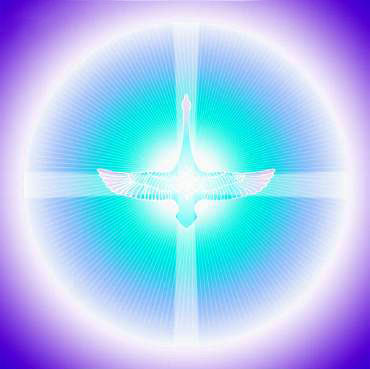
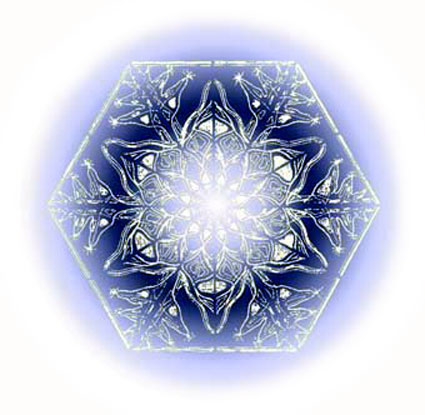
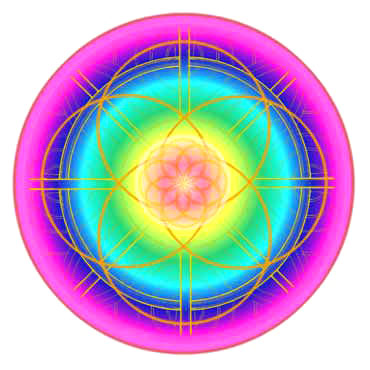
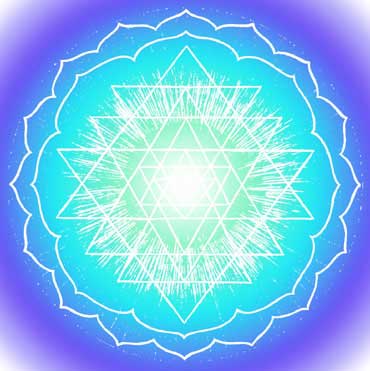
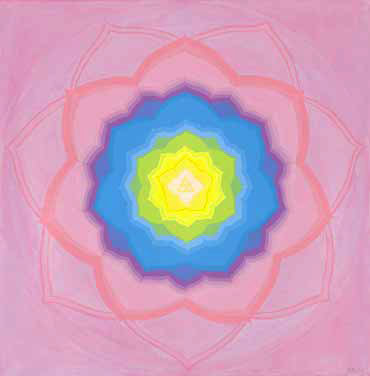

 - Reading with Natalie, book here...
- Reading with Natalie, book here...